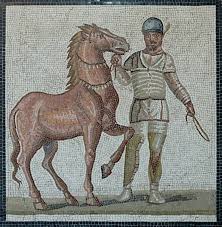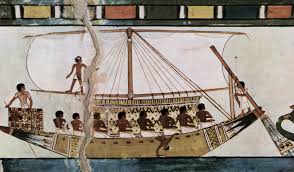Ancient Roman Transportation: Romans traveled by land and sea. From earliest times the Romans displayed remarkable skill at building and engineering. They constructed bridges across the river Tiber, aqueducts to supply Rome with water, and sewers to drain the forum and keep the city healthy.
Ancient Roman Transportation
Transport by water
Transport by water was also important to the Romans. They built large merchant ships called Croatia, which could carry up to 1,000 tons of cargo.

Roman ships had a single main mast, which carried a rectangular sail, although some ships also had small sails at the bow and stern. Roman ships did not have rudders. Instead, they were steered by oars. The Romans also built lighthouses to aid shipping. Roman transport used a lot of water.
Transport of heavy and bulk materials – like grain – was concentrated on water. Rivers, canals, and the sea were the main commercial routes of the Roman empire.

Roman shipping rode the winds and (often conflicting) currents of the Mediterranean Sea and followed the major rivers of the empire. Where the rivers were no use, Rome dug canals to move goods. Quays and harbors linked the wet and dry parts of the transport system.
Transportation by horse and chariot
The most used method of transport was the horse and the chariot – simply because they did not have many other ways to do it. When people traveled they also could have walked but it is tiring.

When they wanted to go to some places they went to use a sailing ship or a rowboat. This could also have been used by the Roman Army as it was powerful. They used Triremes and ships that were like that as they were powerful enough.
As they expanded their power across Italy, the Romans linked the capital with other communities they had conquered by a network known as the famous Roman roads so well designed that many still lay beneath the motorways of modern Italy.
Transportation by Road
The Romans are famous for the network of roads they built across the Empire. Roman legionaries built them so the Roman army could march from one part of the empire to another quickly. Rich people traveled by horse or on long journeys by covered wagon. Sometimes they were carried in litters (seats between two long poles).

After the neglect of the provinces during the civil wars, Augustus was determined to improve the infrastructure to promote economic growth. During the first two centuries AD, the war was relatively infrequent, and Augustus and his successors kept their troops busy with military construction. A great network of roads, bridges, and canals opened the interior of Gaul to Roman commerce and cultural influence.
Roman Transportation Facts
Rome’s military engineers were skilled surveyors who designed numerous vast projects in the provinces that the troops helped to build:

fortified camps, frontier walls, roads, canals, bridges, arches, baths, and temples. It was common for rich students to travel to more distant parts of the empire in order to improve their skills.
How did they travel in ancient Rome?
The dominance of the seas came thanks to the historic victory over the Carthaginians and Pompey’s victory over the pirates who were well known to pillage coastal towns or take dignitaries in exchange for ransom.

A particularly well-remembered occasion is when Julius Caesar himself was taken in his youth (he gained their respect and later came to order their deaths by capital punishment). Roman transport depended more on water than the land but Romans gave our roads pride of place for one simple reason.



